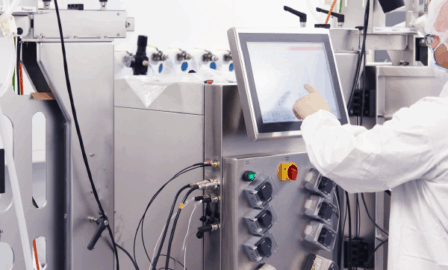Exploring Laboratory Automation Benefits for Your Pharma Lab Operations
During the COVID-19 pandemic, laboratories were forced to consider the number of technicians that could operate in a confined space while still maintaining the throughput required to test and release product on time. Whether the laboratory was already operating in a computerized system or was still paper based, lab automation was a solution that enabled many facilities to continue to perform efficiently. Below, we unpack key laboratory automation benefits.
Key Laboratory Automation Benefits
One of the common ways that companies use to automate laboratory methods is through guided execution. Either through use of an LES or a highly customized LIMS assay, guided execution can offer many benefits to a laboratory, including:
- Reduce the amount of paper required by decreasing reliance on worksheets or SOPs
- Ensure the analyst has the appropriate equipment, standards, and reagents
- Define the correct execution of an assay by guiding the analyst step-by-step through the assay
- Automate the addition or removal of results, or additional assays based on logical pathways
- Perform complex calculations that previously required validated spreadsheets or worksheets
Instrument integration is another form of automation that can benefit the laboratory. Transferring data from an instrument to a LIMS or a worksheet manually can be time-consuming and has a high risk of transcription errors, especially in laboratories that work with equipment such as plate readers where a single run can generate many data points.
An additional concern is the data from the instrument must be preserved to meet GxP and data integrity requirements. Directly integrating the instrument into a LIMS means that the data is transferred to the LIMS and applied to the appropriate result at the touch of a button or through automatic communication, dramatically reducing the time spent recording data and removing the need to store a printout from the instrument. These instrument-generated files are preserved and saved electronically, eliminating the storage of paper records.
New technology continues to push the boundaries of what automation can provide. Liquid handlers offered substantial advancement when they became popular in laboratories. Today, there are a number of companies that are investigating other avenues for laboratory automation. Andrews OneLab, as an example, contains a guided execution module, where its most promising feature is the automation of the physical execution of an assay.
By purchasing integrated instruments, such as shakes, liquid handlers, vacuums, and more, the laboratory can program the full execution of an assay using the OneLab software. Liquid handlers can pipette reagents and samples into a 96-well plate, a robotic arm can then move the plate to the shaker where the plate is shaken for the prescribed amount of time Once that step is complete, the robotic arm can return the plate to the liquid handler for any additional required reagents and processing. Other vendors, such as ThermoFisher and PerkinElmer also offer similar automated workstations.
Leveraging Automation in the Lab
Automation in the laboratory space can help firms improve their efficiency in a rapidly evolving and quick-paced industry. If your business is looking to learn more about emerging areas in lab automation, reach out to our team of LIMS consultants today.



